

This week: Job Hugging
Workers are clinging to their jobs “for dear life” in a frozen job market. But beneath the surface, many feel stuck, frustrated, and disconnected from growth, leading to disengagement and what experts now call “quiet cracking.” Leaders who mistake this fear for loyalty risk being caught off guard when the market shifts and pent-up exits begin.
We also dive into:
- Create Context, Not Chaos: 66% of U.S. workers report burnout. Sophie Wade shows how sports, seasonal, and Hollywood rhythms offer stability in fast-changing workplaces.
- Rediscovering WeWork’s Office Lessons: WeWork’s Chelsea HQ was a magnet for energy. Phil Kirschner shares design cues that still shape vibrant, hybrid offices.
- Reclaim Your Mondays: Treat time like money. Alexandra Samuel’s meeting-free Mondays unlock deep work and sustained focus, especially for neurodiverse minds.
- America’s New Workforce Playbook: The White House’s plan includes AI literacy, 1M apprenticeships, mobility upgrades, and outcome-based accountability for a future-ready workforce.
- Do Workers Want AI Bosses?: 73% say yes to AI in key decisions. Workers trust AI for fairness, but still value human empathy in leadership.
Let’s get into it 👇
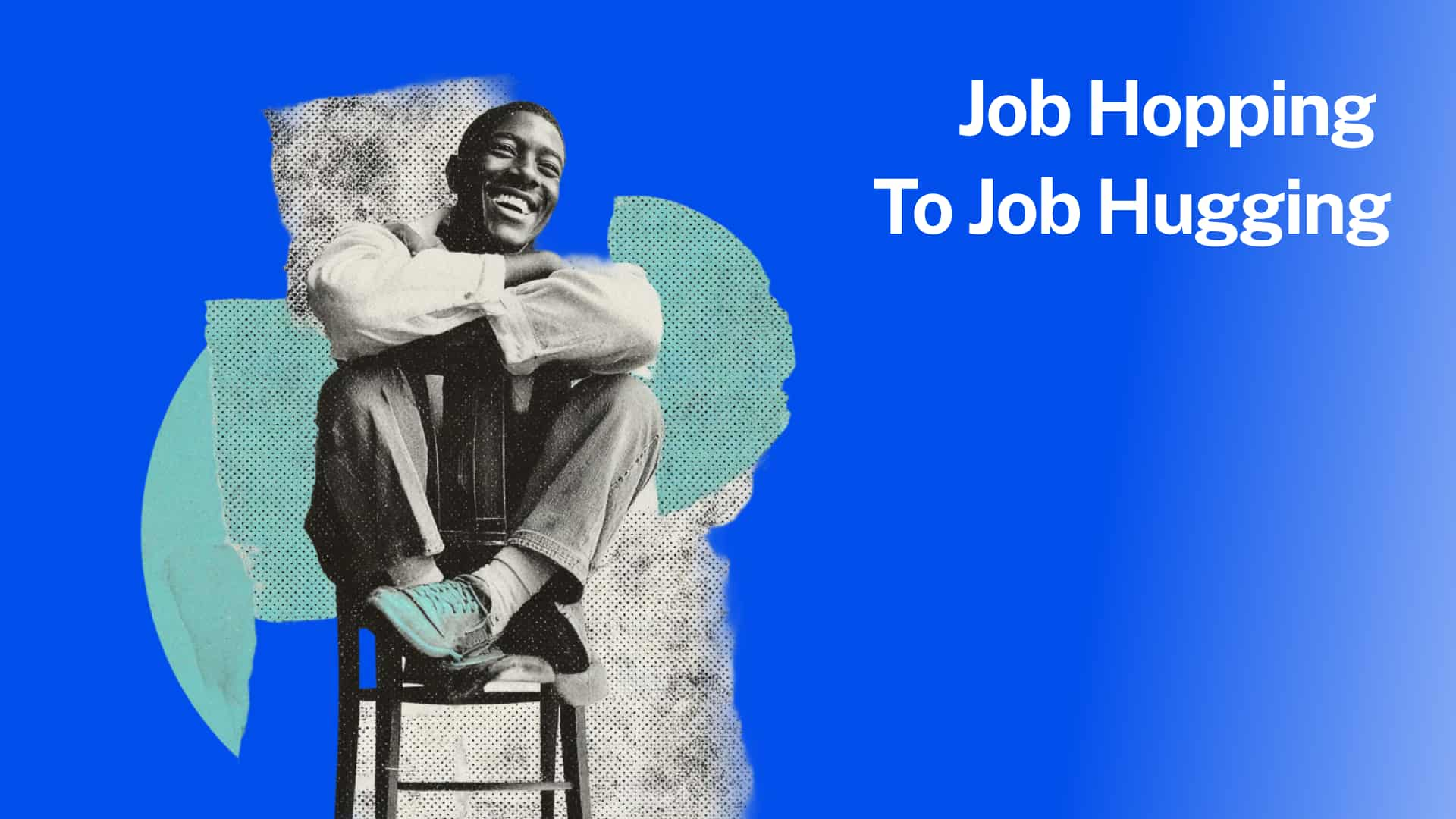
Workers are clinging to their jobs “for dear life.” But beneath the surface, frustration is brewing, and leaders who mistake fear for loyalty may face a painful surprise when the market shifts.
From Great Resignation to Great Stay
Just three years ago, nearly 100 million Americans quit their jobs in what became known as The Great Resignation. That bold exodus has now frozen into something very different: job-hugging.
Coined by consultants at Korn Ferry, job-hugging describes workers holding tightly to their roles in a time of economic and career uncertainty. “A sense of global events as unpredictable and unprecedented, combined with looming AI disruption, is making workers increasingly unsure, which can lead them to stay in holding patterns, rather than developing their skills and careers,” said Matt Bohn.
The Frozen Labor Market
The numbers confirm the mood.
- Quits rate fell to 2% in June, the lowest since 2016 (New York Post).
- Job growth slowed to just 73,000 in July, with economists warning the real trend may be closer to 30,000 per month (Business Insider).
- More CEOs are planning cuts (34%) than hiring (27%), according to a recent survey (CNBC).
- Through July, U.S. employers cut over 800,000 jobs, the highest midyear figure since the pandemic (Challenger, Gray & Christmas). Add rising inflation and President Trump’s new tariffs, and it’s little surprise that workers are hugging their roles tight (Fast Company).
On Reddit, the stories are raw. Overqualified applicants chasing entry-level jobs. Workers are applying hundreds of times with no callbacks. “There’s just nowhere else to go,” one worker wrote.
The reality is that higher interest rates are limiting business expansion, uncertainty is everywhere, and CEOs are pulling back.
The job market feels frozen, and companies know it.
Resentment and Quiet Cracking
With economic, political, and technological uncertainty on all sides, employees retreat to the lower rungs of Maslow’s hierarchy of needs. Security and safety come before ambition and self-actualization. A paycheck, healthcare, and stability outweigh the risks of trying something new.
A Glassdoor survey found that 65% of employees feel stuck, including 73% in tech roles. “As workers feel stuck, pent-up resentment boils under the surface and employee disengagement rises,” wrote Glassdoor economist Daniel Zhao in a report cited by Fortune.
That disengagement shows up as quiet quitting or even “quiet cracking,” when workers reach a breaking point and mentally check out. Gallup estimated this kind of disengagement cost the global economy $438 billion in 2024.
On Reddit, workers describe toxic cycles of applying, being ignored, or staying put with shrinking benefits. The mood is consistent: fear, frustration, and waiting for a better moment to move.
Turning Job Hugging Into Your Advantage
For leaders, this moment is about working smarter with what you have. Job-hugging gives companies a pause from constant turnover, and that pause can be an advantage.
If employees are hugging their jobs out of fear, leaders can help them feel new in their old jobs. This is where job crafting comes in, encouraging people to “spice up” their current role by taking on stretch projects, reshaping tasks, or experimenting with new skills within the safety of their existing job.
As Axios cautioned, “job huggers are not exactly putting in their best work.” Fear may keep people seated, but it does not inspire excellence. Korn Ferry’s Stacy DeCesaro told Fortune: “Once the market improves, there is going to be pent-up demand. People will leave in droves.” The leaders who invest now in growth and trust will be the ones workers choose to stay with when opportunities open again.
The Bottom Line
Leaders: Job-hugging is a survival stage. Employees are operating at the security stage of Maslow’s needs, clinging to stability while putting growth on hold.
This is your chance to help them feel new again without leaving. Practical steps you can take:
- Ask for a wish list: have each employee write down the projects or achievements they would love to pursue this year.
- Discuss and match: connect at least one of those wishes to their current role or an upcoming initiative.
- Run growth sprints or hackathons: give space for short-term experiments where teams test ideas safely.
- Hold energy retrospectives: check in on what drains or excites the team, not just on process.
- Celebrate progress: highlight small wins so people see growth even when they stay put.
Job-hugging will not last forever. The market will improve, and when it does, the organizations that helped people grow during this freeze will be the ones employees choose to keep hugging back.
Your Friday Briefing on the Future of Work
Future Work delivers research-backed insights, expert takes, and practical prompts—helping you and your team capture what matters, build critical skills, and grow into a future-ready force.
Get all-in-one coverage of AI, leadership, middle management, upskilling, DEI, geopolitics, and more.
Unsubscribe anytime. No spam guaranteed.
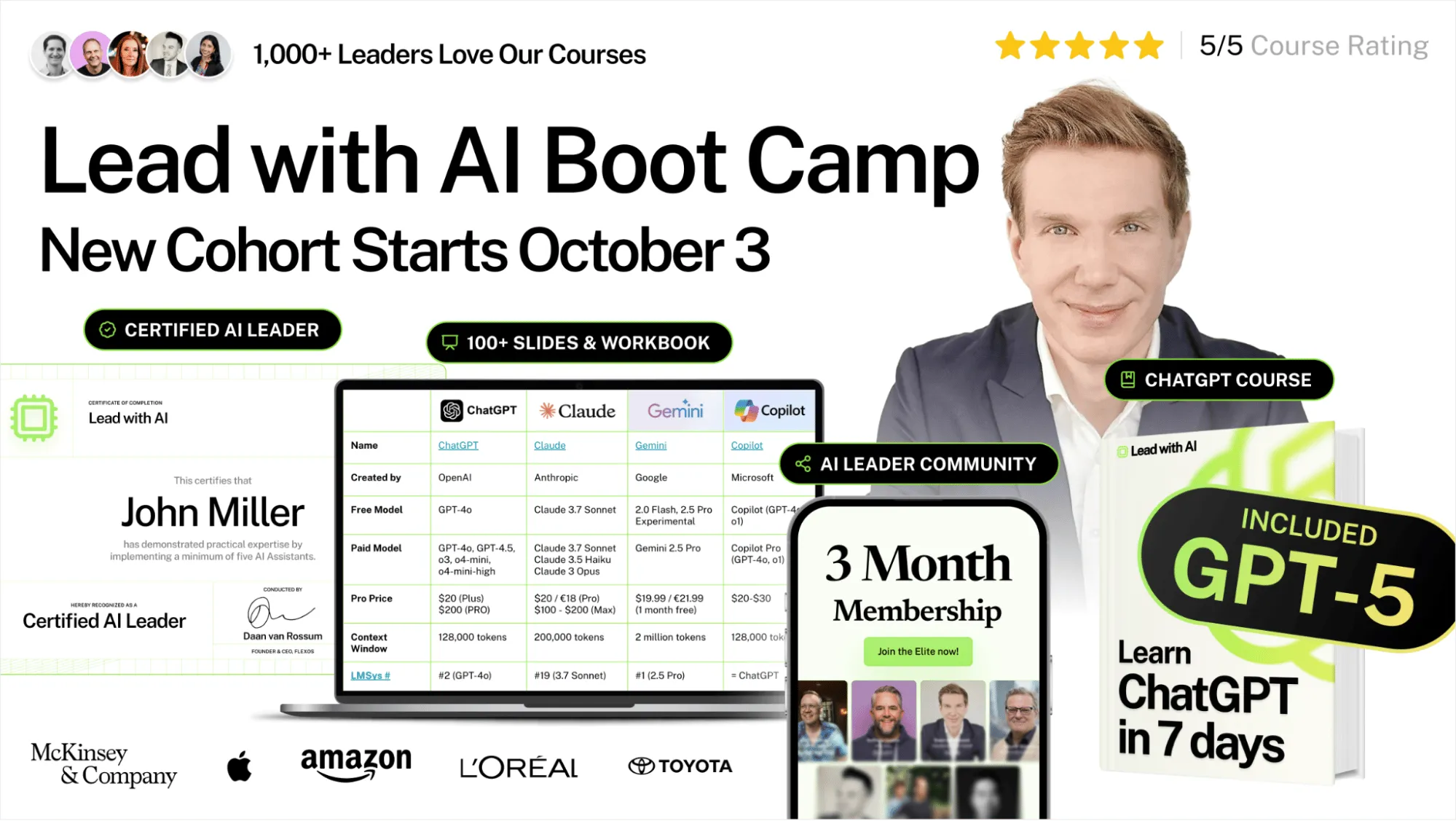
The newly launched ChatGPT-5 will change the way leaders work with AI significantly, so upskilling has never been more important. This is your chance to skill up and turn GPT-5 + Agents into real outcomes.
Here’s your shortcut to confidently and readily leading the AI adoption in your organization:
- Build 5+ custom AI assistants for your role
- 4 live, hands-on coaching sessions (two time options)
- 15 bite-sized lessons, fully updated for GPT-5 + Agent mode
- Verified AI Certification to signal the skills you’ve earned
The program is updated for October 3, now covering GPT-5, ChatGPT Agents, and your enterprise AI stack (ChatGPT, Copilot, or Gemini).
I keep a close eye on what Future Work Experts are thinking, saying, and questioning. I break down the key conversations and brainstorm practical steps we can take to move forward.
This week:
FLEXIBLE FRAMEWORKS

Sophie Wade: Create Context Not Chaos
- Burnout & Instability: 66% of U.S. employees report burnout; 91% of 18–34-year-olds show fatigue symptoms. Without context, rapid change produces chaos and overwhelm in AI-driven workplaces.
- Why Digital 1.0 Failed: Over 70% of digital transformations in the 2010s failed due to a lack of human-centric integration and unchanged mindsets, despite frameworks like Deloitte’s and Forrester’s.
- Frameworks That Fit: Sophie proposes translating agility into familiar models—Sports team rhythms, Seasonal cycles, or Hollywood production styles—then piloting, co-designing rituals, setting cadences, and measuring both burnout risk and performance signals.
📝 Prompt: Which flexible framework, sports, seasons, or productions, could best reduce friction and burnout in your teams while enabling AI-powered transformation?
MAGNETIC WORKPLACES
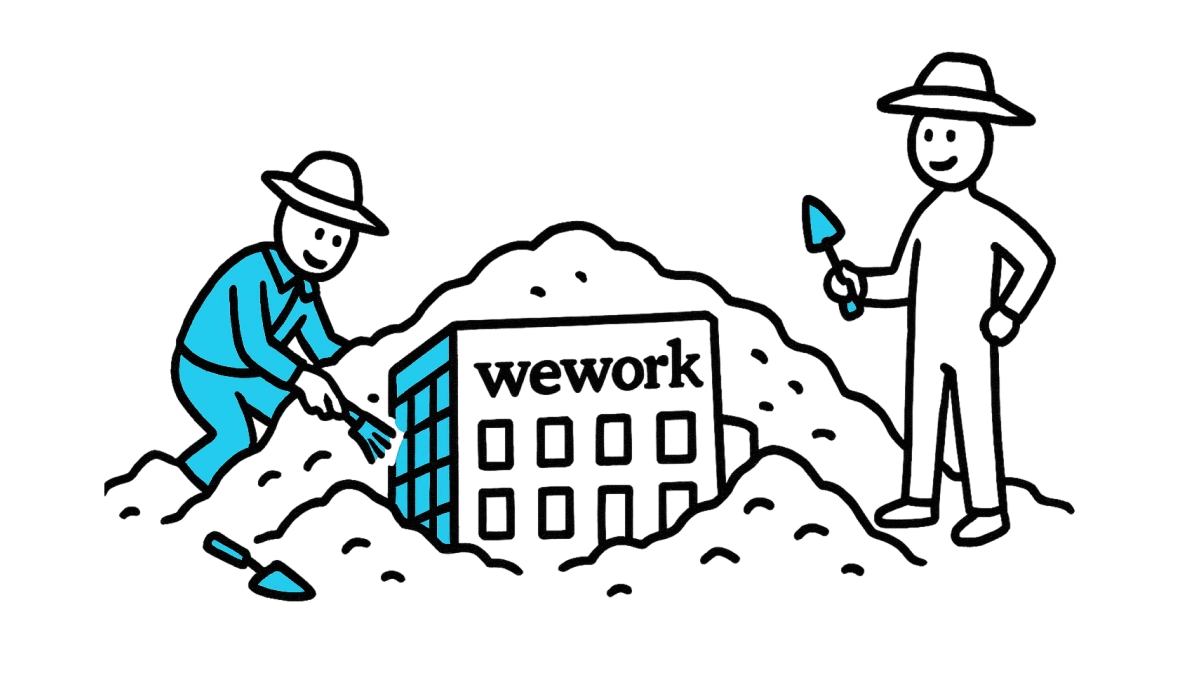
Phil Kirschner: Rediscovering WeWork’s Office Lessons
- Designing for Magnetism: WeWork’s Chelsea HQ (2019) embodied the post-pandemic ideal office—distributed, collaborative, tech-enabled, and adaptable. Its “center of gravity” mixed cafés, events, and multipurpose spaces to spark connection.
- Operational Vibe, Not Just Design: The Community team curated art, music, furniture, and events with ongoing feedback, showing that culture is OPEX-driven (daily operations), not just CAPEX (one-time build).
- Principles Still Relevant: Proximity over perks, activity-based workplaces with 2.5:1 desk ratios, biophilic design, and modular phone booths all made the HQ magnetic—proof that people stay where energy flows.
📝 Prompt: Walk through your office this week. Does it make people want to linger or leave?
MEETING-FREE MONDAYS

Alexandra Samuel: Reclaim Your Mondays
- Time as Currency: Treat your schedule like finances—“pay yourself first” by reserving Mondays for deep, high-value work instead of reactive tasks.
- Proven Practice: Six months of meeting-free Mondays enabled Samuel to draft and revise her book ahead of deadline, showing the power of uninterrupted focus.
- Brain-Friendly Design: Aligning work with cognitive rhythms (especially for ADHD and neurodivergent thinkers) reduces energy drains and boosts productivity.
📝 Prompt: Try protecting one day, or even one morning, for deep, uninterrupted work. How might this change the energy and results of your team?
👉 Read the post to see Alexandra Samuel’s five tactics for making meeting-free Mondays work.
🔥 QUICK HITS:
(ATTENTION MANAGEMENT) Chris Dyer: Off Is a Skill
- Not Time, Attention: Leaders don’t have a time problem; they have an attention problem. “Off” isn’t a vacation; it’s a leadership skill.
- 5 Practices: Daily 60-minute device-free block, a meeting-free half-day weekly, right to disconnect policies, analog rituals (like paper notes or walking 1:1s), and a Friday energy audit.
- Output Predictor: Treating focus as a policy with reps, metrics, and accountability leads to stronger performance and resilience.
📝 Prompt: Block your calendar now for a 60-minute device-free session and invite your team to do the same.
(JOB MARKET & AI) Brian Elliott: The Job Market Squeeze
- Uncertainty & RTO Fallout: US jobs declined 3 months straight (excluding healthcare), with July layoffs up 149%. RTO mandates pushed many mothers out of the workforce, amplifying recession risks.
- AI vs. Reality: AI-linked layoffs were just 17% of July cuts (~10k). Big Tech still grows engineering teams, with uneven productivity gains and no mass displacement yet.
- DOGE Cuts & Automation Risk: Federal and nonprofit job cuts made up 38% of 2025 layoffs, costing over $135B. Downturns accelerate automation, threatening non-routine cognitive roles long-term.
📝 Prompt: Break the fear-driven cycle by resisting reactive layoffs and rigid RTO mandates, planning AI adoption thoughtfully, protecting workforce participation, and investing counter-cyclically in talent and innovation to build long-term resilience.
(JOB TRANSITIONS) Tracy Brower: How to Know When to Quit
- Why People Leave: 41% of workers quit jobs recently, yet 72% regret it, and 61% wish to return. Key drivers: lack of purpose, growth, connection, or cultural fit.
- Prepare to Move: With only 13% of job seekers saying their search is going well, mindset, finances, and networking (80% of hires involve referrals) are critical to speed the transition.
- Fit Matters Most: The best next job offers purpose, growth, connection, and culture, plus leadership you respect and teams you align with.
📝 Prompt: How can you ensure your organization gives people enough purpose, growth, and belonging that they don’t want to quit in the first place?
I track what’s worth your attention—bringing you the news and updates that matter most to how we work, lead, and grow.
This week:
TALENT STRATEGY

America’s New Workforce Playbook For The Golden Age
- The Trump administration released America’s Talent Strategy, a federal workforce plan built on five pillars: apprenticeships, mobility, unified systems, accountability, and AI-driven innovation.
- 1M Apprenticeships & Sector Focus: The plan expands apprenticeships through industry-led curricula and group sponsorships in critical areas like semiconductors, shipbuilding, and AI.
- Modernized Systems & Mobility: Federal platforms like O*NET and CareerOneStop will integrate AI coaching, VR training, and skills-based hiring, while addressing childcare, licensing, and transport barriers.
- Accountability & AI Investment: Funding will be tied to outcomes like job placement and wage growth, with underperformers cut and new investments in AI literacy, retraining pilots, and a national AI Workforce Hub.
📝 Prompt: Choose one critical role on your team and ask: If this role were redesigned around apprenticeships, AI tools, and judgment skills instead of credentials, how would that change who we hire and how we train them?
JUDGMENT SKILLS
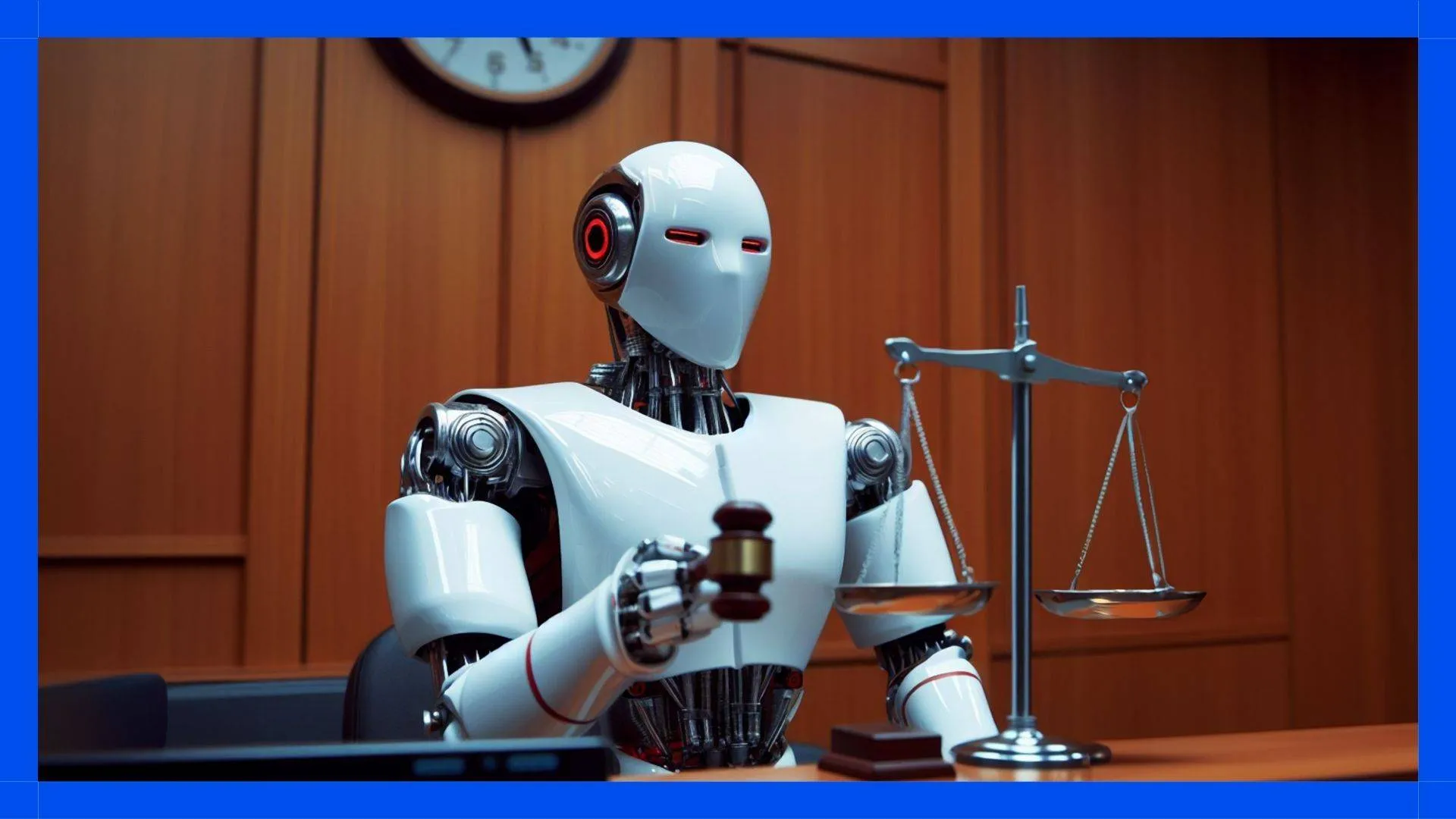
AI Makes Judgment the Differentiator
- AI Replaces Implementation, Not Judgment: New models show AI substitutes skills like coding and writing, but complements human judgment—knowing what to do with AI outputs.
- Two Key Judgment Skills: Opportunity judgment (spotting improvements) and payoff judgment (deciding under uncertainty) are central to future value.
- Inequality Shift: AI may boost broad performance short-term, but long-term, gaps may widen as judgment becomes the key differentiator.
📝 Prompt: In your next team review, pick one project where AI already handles much of the implementation. Ask each member to identify one opportunity judgment and one payoff judgment. Use these to train judgment as the new core skill.
WORLD-CLASS TEAMS

What Winning Teams Do Differently
- 4 Pillars of Sustained Success: Interviews with elite coaches and athletes highlight four core principles: set high standards, recruit the right mix of talent, codify operating playbooks, and build team-wide confidence for consistent excellence.
- Fit and Trust Over Stardom: Winning teams focus less on superstars and more on trust, accountability, and role clarity, ensuring every member, from veteran to walk-on, feels valued and aligned.
- The Sports Playbook Advantage: Businesses that borrow sports-style systems, clear standards, playbooks, and distributed leadership, gain resilience and outperform under uncertainty.
📝 Prompt: This week, write down your team’s “playbook”: define one clear standard for how you work together, clarify each role’s contribution to the goal, and share it openly so every member can see their line to team success.
AI IN MANAGEMENT
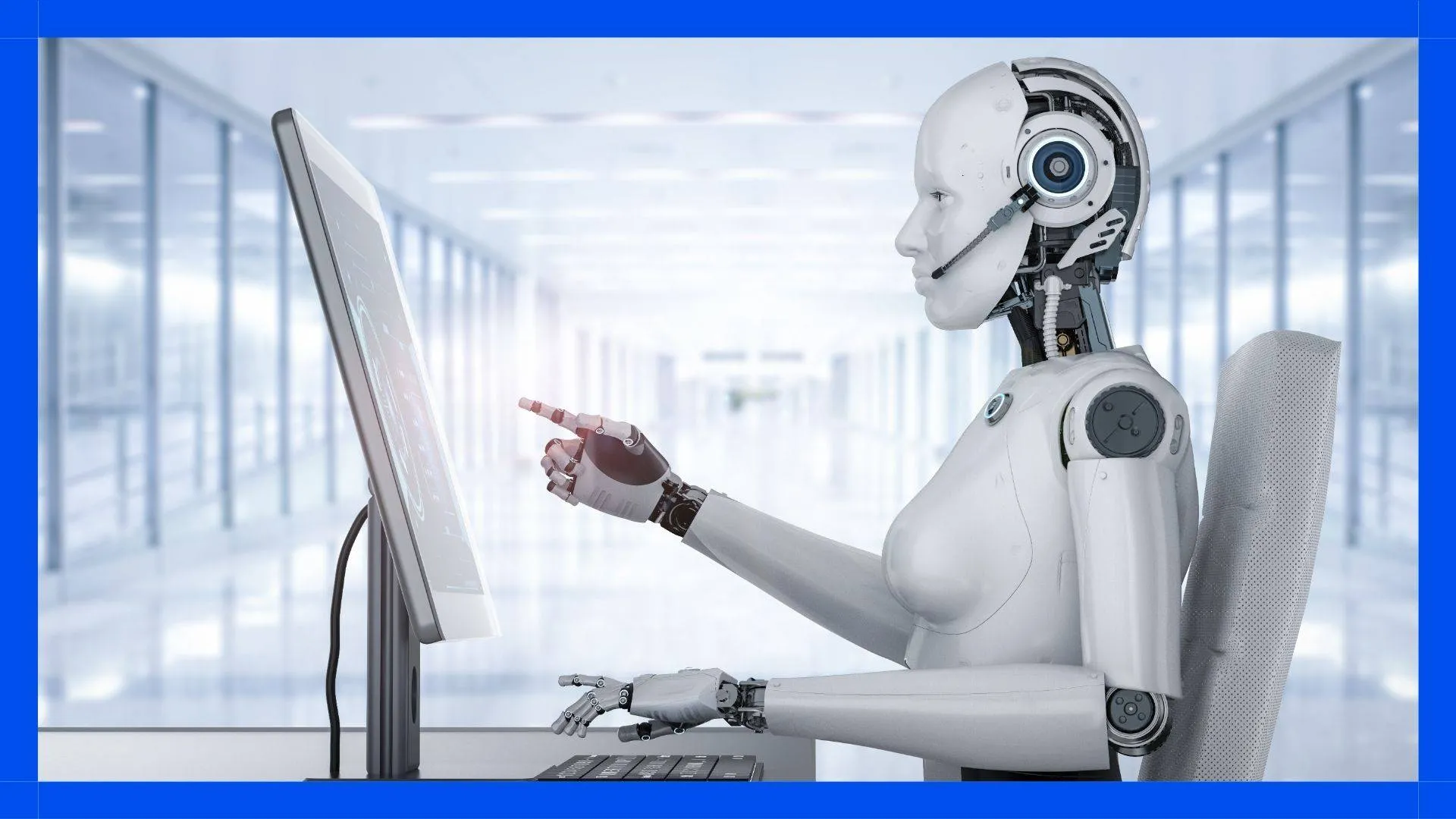
Do Workers Want AI Bosses?
- AI in Key Decisions: 73% of U.S. workers want AI involved in major decisions like hiring, layoffs, and budgeting, believing it could boost fairness and efficiency.
- Logic vs. Empathy: Workers trust AI for logic-based tasks—like feedback (54%), promotions (55%), and project management (44%)—but 62% still prefer human supervisors for empathy and motivation.
- Monitoring and Transparency: Nearly 70% are comfortable with AI monitoring, and 85% say AI-led transparency would build employer trust—though only 28% believe AI can truly outperform humans.
📝 Prompt: Ask your team: Which management tasks would you feel most comfortable handing over to AI (e.g., performance reviews, scheduling, promotions)? Which should always remain human-led? Use this to map out an AI–human leadership balance that feels fair and motivating.
HR-BRAND INTEGRATION

HR and Marketing, One Role
- Unified Leadership Role: Limbach named Melissa DiMuro as Chief People, Culture, and Marketing Officer to align HR and brand under its owner-direct model.
- Employee-Driven Branding: Programs like #LMBLevelUp, podcasts, and blogs elevate employee stories to boost recruitment, retention, and trust.
- HR–Marketing Synergy: The strongest overlap is in recruitment branding, where employees act as storytellers who shape the company’s value proposition.
📝 Prompt: Identify one authentic employee story that reflects your company’s purpose and share it externally, through a podcast, blog, or campaign, to strengthen both recruitment and customer connection.
🔥 QUICK READ:
- U.S.–EU Trade Deal Tariff Shakeup: The U.S. and EU struck a major trade agreement cutting tariffs on European imports from 30% to 15%, with Europe committing to $750B in U.S. energy purchases and $600B in U.S. investments by 2028. The deal also includes expanded U.S. defense and agriculture exports, and lower auto tariffs once reciprocal cuts are enacted. While officials call it historic, some EU critics label it overly favorable to the U.S.
- DOL Opens Door to Private Equity in 401(k)s: The Department of Labor (DOL) overturned a 2021 rule that discouraged private equity and crypto in retirement plans, following a new executive order from President Trump. While proponents argue this boosts retirement diversification and innovation, critics raise concerns about higher fees, volatility, and fiduciary risks. New ERISA guidance is expected within 180 days.
- Googlers Told to Go All-In on AI: Google is urging its workforce to adopt internal AI tools like Cider and Gemini for tasks from coding to custom productivity workflows. With 30% of code already AI-generated and productivity reportedly up by 10%, AI usage is becoming a performance expectation. Engineers are expected to dogfood AI daily as part of Google’s broader competitive push.
Your Friday Briefing on the Future of Work
Future Work delivers research-backed insights, expert takes, and practical prompts—helping you and your team capture what matters, build critical skills, and grow into a future-ready force.
Get all-in-one coverage of AI, leadership, middle management, upskilling, DEI, geopolitics, and more.
Unsubscribe anytime. No spam guaranteed.

